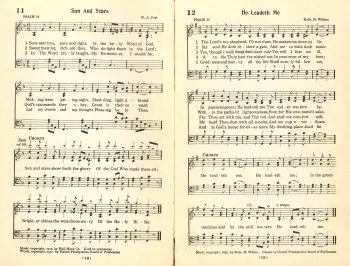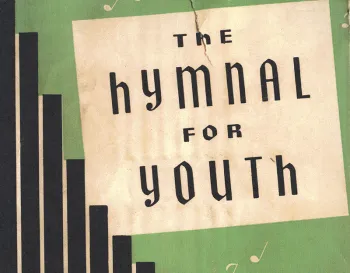Learning to Sing: Presbyterian Hymnals and Psalters
The Psalms of David Page 1
Early American Presbyterian governing bodies left the decision of singing psalms or hymns up to the individual congregations. As a result, Presbyterian churches across the young United States used a variety of psalters and hymnals in their worship. During this period, most psalms were “sung” in a “metered” rhythm using psalters which contained words but rarely music.
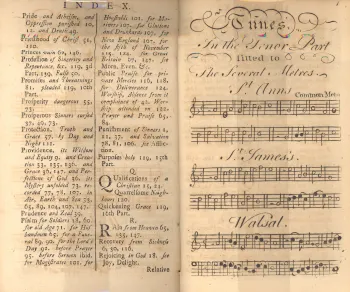
Timothy Dwight (1752-1817) is one of the most notable names of early American hymnology. A chaplain in the United States Army, Dwight later served as president of Yale College. This volume, used almost exclusively in Connecticut, is one of the numerous variations on Watts' Psalms of David.
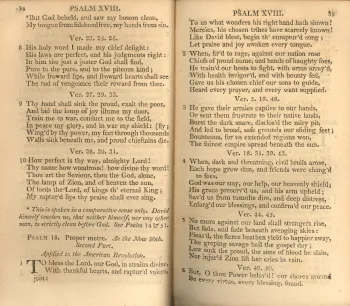
Olney Hymns Page 2
Olney Hymns, a collection of hymns by William Cowper and John Newton, served not only as a hymnal but also as a devotional book. It greatly influenced other hymn writers, and its use crossed all denominational lines.
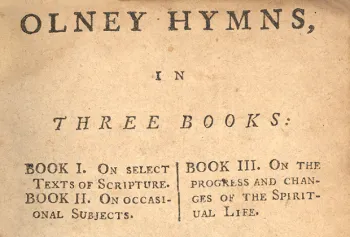
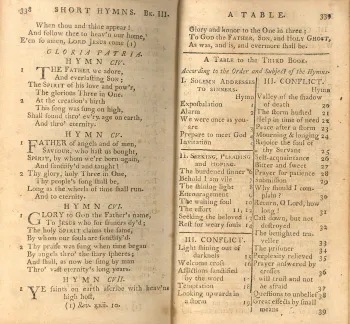
Musical Education: Andrew Adgate Page 3
Early American churches lacked musical education not only for the congregation but for church leaders as well. To correct this problem, singing schools sprang up across America. With increased musical education, the desire for additional tunes grew and by 1800, over 130 different collections of tune books were in print. Initially, singers held two books, one with the words and one with the tune. By the mid-1800s, many tune books adopted a split format. In these books, tunes and words were printed on the same page but with the pages cut so that the two could be mixed and matched. After the Civil War, most hymnals conformed to what we have today, the text printed with the tune.
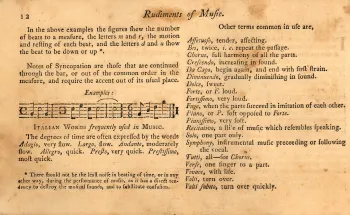
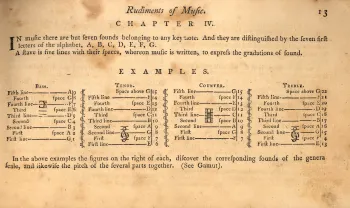
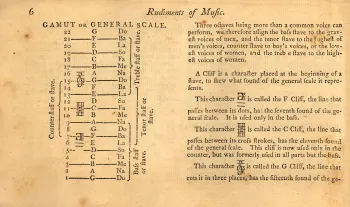
Musical Education: William Little Page 4
Another American music instructor, William Little, developed a four-shape notation which is the basis for many Southern gospel books used in the twentieth century.
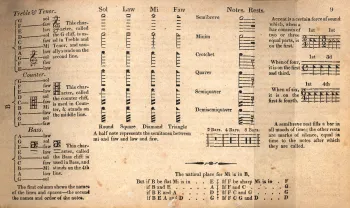
Musical Education: Lowell Mason Page 5
One of the dominant influences on American musical education, Lowell Mason (1792-1872) introduced music classes in public schools, trained singing instructors, and published many tune books during his career.

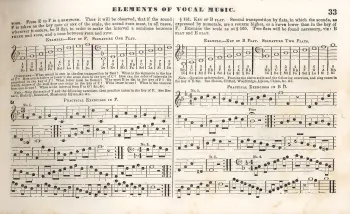
Split-Leaf Psalter Page 6
A split-leaf psalter enabled the user to mix and match tunes and text. Note how each psalm lists its appropriate tunes.
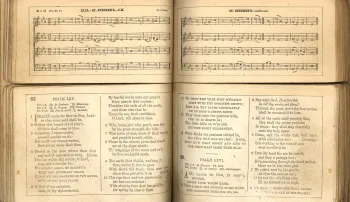
Official Hymnals Page 7
American Presbyterian governing bodies overturned efforts to form a sanctioned hymnal committee, but in 1819 the Presbyterian Church in the U.S.A. General Assembly finally granted approval. After much work and several revisions, Psalms and Hymns Adapted to the Public Worship (first printed in 1830) became the first official American Presbyterian hymnal in 1831. Other Presbyterian denominations continued to sing only psalms; the United Presbyterian Church of North America, for example, published its first volume that included hymns in 1927. As musical tastes and worship practices changed, Presbyterians compiled new hymnals and collections of sacred songs that provided a rich heritage of ways to “sing to the Lord a new song.” (Psalms 96:1)
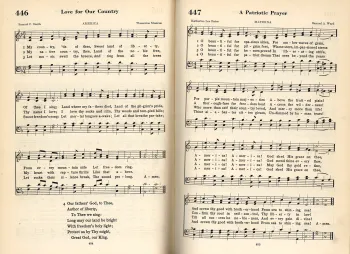
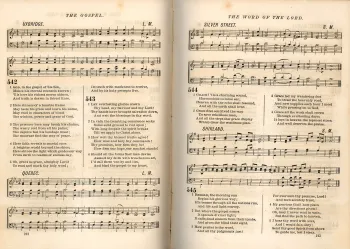

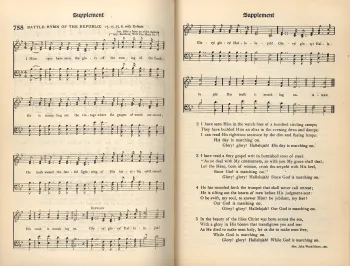
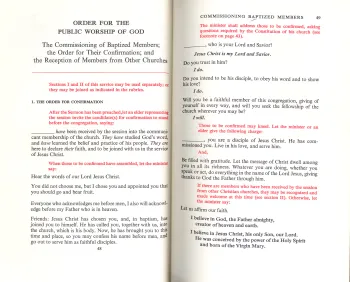
Hymnals for Youth Page 8

